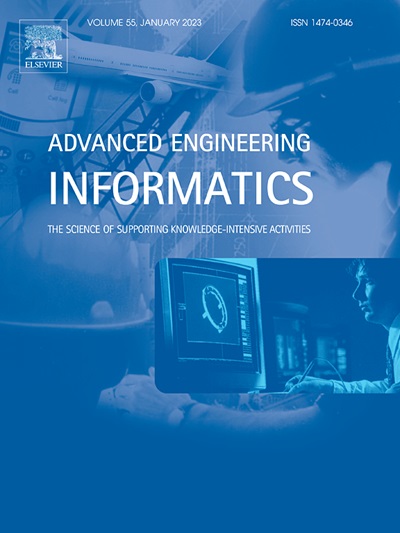Multi-source fault data fusion diagnosis method based on hyper-feature space graph collaborative embedding
IF 8
1区 工程技术
Q1 COMPUTER SCIENCE, ARTIFICIAL INTELLIGENCE
引用次数: 0
Abstract
Rotating machinery fault diagnosis based on multi-source sensor monitoring presents high dimensionality, high sampling frequency, and nonlinearity problems, making it challenging to accurately and timely determine the true health status of the equipment. Moreover, existing methods, such as deep learning models, face issues like a large number of training parameters and limited interpretability, which hinder their application in engineering practice, especially in scenarios that require fast diagnostic performance and ease of deployment. To address this problem, a novel fault diagnosis framework based on hyper-feature space graph collaborative embedding (HFSGCE) is proposed in this paper to improve the health status identification efficiency. Firstly, the algorithm realizes the preservation of the near-neighbor structure of the data by establishing a hyper-feature space embedding graph model corresponding to different types of sensor data. Secondly, a fused hyper-Laplacian scatter matrix is established based on the graph structure model to achieve feature-level fusion of multi-source data. Finally, the dimensionality-reduced multi-source monitoring data is fed into the classifier for pattern recognition. The algorithm was experimentally validated using two types of bearing fault simulation data from Paderborn University and our laboratory. The results demonstrate that the algorithm effectively eliminates redundant information from large volumes of low-value-density monitoring data, providing a new insight for rotating machinery fault diagnosis in the context of big data.
求助全文
约1分钟内获得全文
求助全文
来源期刊

Advanced Engineering Informatics
工程技术-工程:综合
CiteScore
12.40
自引率
18.20%
发文量
292
审稿时长
45 days
期刊介绍:
Advanced Engineering Informatics is an international Journal that solicits research papers with an emphasis on 'knowledge' and 'engineering applications'. The Journal seeks original papers that report progress in applying methods of engineering informatics. These papers should have engineering relevance and help provide a scientific base for more reliable, spontaneous, and creative engineering decision-making. Additionally, papers should demonstrate the science of supporting knowledge-intensive engineering tasks and validate the generality, power, and scalability of new methods through rigorous evaluation, preferably both qualitatively and quantitatively. Abstracting and indexing for Advanced Engineering Informatics include Science Citation Index Expanded, Scopus and INSPEC.
 求助内容:
求助内容: 应助结果提醒方式:
应助结果提醒方式:


